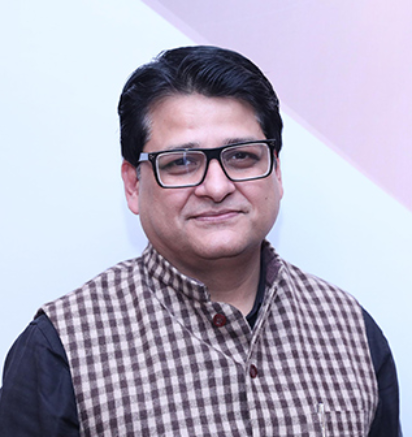-
CENTRES
Progammes & Centres
Location
All options are costly and risky. But not making a decision now could further limit India’s choices in the future.

President Donald Trump’s order to the Pentagon to resume nuclear testing following a hiatus of over 30 years should not come as a surprise. Even before the latest announcement, the United States was already in the midst of modernising its nuclear forces, going back at least to the Obama administration. This shift in policy on nuclear testing is as much a product of the changes in the global nuclear landscape as it is about the quality, safety, reliability, and performance of the American atomic arsenal.
Globally, there are existing or designated nuclear weapons states (NWS), which are either refining their existing weapon designs or developing new ones. There are also four outlier non-nuclear weapons states (NNWS), which are not members of the Non-Proliferation Treaty (NPT) but possess nuclear weapons: India, Pakistan, North Korea, and Israel. Iran is a threshold state in that it is capable of acquiring a nuclear weapons capability.
Trump’s decision to resume testing is driven by geopolitical realities.
Global and regional proliferation trends are not driven independently of strategic competition between great powers or regional rivalries imbued with deep historical animosities. Competition between the US and the China-Russia entente is also impacting the global nuclear landscape.
There is triangular nuclear competition between the US, Russia, and China. The latter two are in cahoots, working collusively against the US. Russia has extended nuclear cooperation to China with the supply of fast breeder reactors (FBRs) that would enhance Beijing’s weapons-grade plutonium stocks. FBRs produce more fissile material (material that can undergo nuclear fission) than they consume, which makes them attractive for any country seeking to accelerate the quantitative strength of its nuclear arsenal.
Moscow has been vehement that it will not settle for an exclusively bilateral nuclear arms control agreement with the US, insisting that China, too, be a party to a future agreement. Although arms control is not on the agenda of the Trump administration, it could assume significance in another American administration in the years to come. But for now, vertical proliferation through qualitative and quantitative expansion in the arsenals of the NWS will continue apace.
Pakistan and North Korea see their nuclear weapons as instruments of coercion and blackmail, as well as opportunities for a fait accompli.
India, China, and Pakistan are also locked in triadic nuclear competition. Indeed, the China-US nuclear rivalry could have a cascading effect on the India-Pakistan conflict. Pakistan and North Korea see their nuclear weapons as instruments of coercion and blackmail, as well as opportunities for a fait accompli. The ongoing war between Russia and Ukraine has further confirmed the importance of nuclear weapons: Moscow, at one point, actually threatened to use tactical nuclear weapons.
Beyond the coercive value that nuclear weapons have in conventional conflicts, the extended deterrence guarantee from the US to Europe is faltering. A European nuclear deterrent is now at least assuming greater importance and being debated internally. Nevertheless, the European powers with nuclear weapons—the United Kingdom and France—face a real test and challenge in crafting a nuclear posture that credibly deters Russia. Plugging Germany into a UK-France posture could enhance the credibility of a European nuclear deterrent.
India’s choices are constricted. Breaking the nuclear test moratorium that the Vajpayee government announced following the 1998 nuclear tests will pose real challenges. Any decision to resume testing will have consequences. Although the 123 Agreement was concluded between India and the US in 2006, Article 14.2 allows India to test in the face of a “changed security environment”. Under Article 2.3 of the same agreement, the strategic programme is insulated from sanctions, but not the safeguarded programme, which benefits from peaceful nuclear cooperation.
Not being a member of the nuclear suppliers group (NSG) means that New Delhi is vulnerable to sanctions by the cartel as a whole or key individual members, were it to conduct nuclear tests. Waving legal provisions undergirding the 123 Agreement as justification for resuming nuclear testing might not find favour with the NSG, because they wield considerable leverage in punishing India’s safeguarded programme. The latter is crucial for the future of India’s energy security to power its economy—nuclear energy provides an environmentally safer alternative to fossil fuels.
Alternatively, India could resume testing while making clear that no sanctions be imposed, but with the pledge that New Delhi will sign the Comprehensive Test Ban Treaty (CTBT) once its testing programme is completed. In the event that testing is too risky and costly, India could consider expanding the size of its nuclear arsenal. It has also commissioned its fast breeder test reactor (FBTR) in 2026, which should give its decision-makers the opportunity to expand India’s fissile material stocks. Both these choices carry risks and costs, but not making choices at the right time may constrain India’s options in the future.
This commentary originally appeared in The Print.
The views expressed above belong to the author(s). ORF research and analyses now available on Telegram! Click here to access our curated content — blogs, longforms and interviews.

Professor Harsh V. Pant is Vice President – Studies and Foreign Policy at Observer Research Foundation, New Delhi. He is a Professor of International Relations ...
Read More +
Kartik is a Senior Fellow with the Strategic Studies Programme. He is currently working on issues related to land warfare and armies, especially the India ...
Read More +